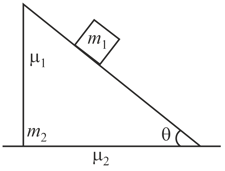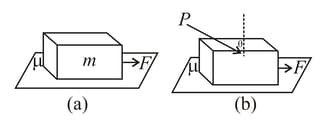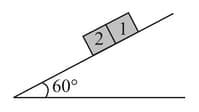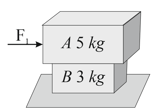BM Sharma Solutions for Chapter: Newton's Laws of Motion II, Exercise 3: DPP
BM Sharma Physics Solutions for Exercise - BM Sharma Solutions for Chapter: Newton's Laws of Motion II, Exercise 3: DPP
Attempt the free practice questions on Chapter 7: Newton's Laws of Motion II, Exercise 3: DPP with hints and solutions to strengthen your understanding. Chapterwise/Topicwise Daily Practice Problems (DPP) Mechanics I JEE Main & Advanced solutions are prepared by Experienced Embibe Experts.
Questions from BM Sharma Solutions for Chapter: Newton's Laws of Motion II, Exercise 3: DPP with Hints & Solutions
A block of mass is placed on a wedge of an angle , as shown. The block is moving over the inclined surface of the wedge. The friction coefficient between the block and the wedge is , whereas it is between the wedge and the horizontal surface. If and , find the minimum value of , so that the wedge remains stationary on the surface.

As shown in the figure, is a man of mass standing on a block of mass kept on the ground. The coefficient of friction between the feet of the man and the block is and that between and the ground is . If the man accelerates with an acceleration in the forward direction, then

The coefficient of friction between the block and the horizontal surface is . The block moves towards right under the action of horizontal force , as in the figure . Sometime later, another force is also applied to the block making an angle (such that ) with vertical, as shown in figure . After the application of force , the acceleration of block shall

In the figure shown, if friction coefficient of blocks and with an inclined plane is and , respectively, then find the correct statement.

A force (where is time in ) is applied at to the block of mass placed on a rough horizontal surface. The coefficient of static and kinetic friction between the block and surface are and , respectively. Which of the following graphs best represent the acceleration vs time of the block ?

A block rests over another block placed over a smooth horizontal surface. There is friction between and . A horizontal force , gradually increasing from zero to a maximum, is applied to , so that the blocks move together without relative motion. Instead of this, another horizontal force , gradually increasing from zero to a maximum, is applied to , so that the blocks move together without relative motion. Then,

